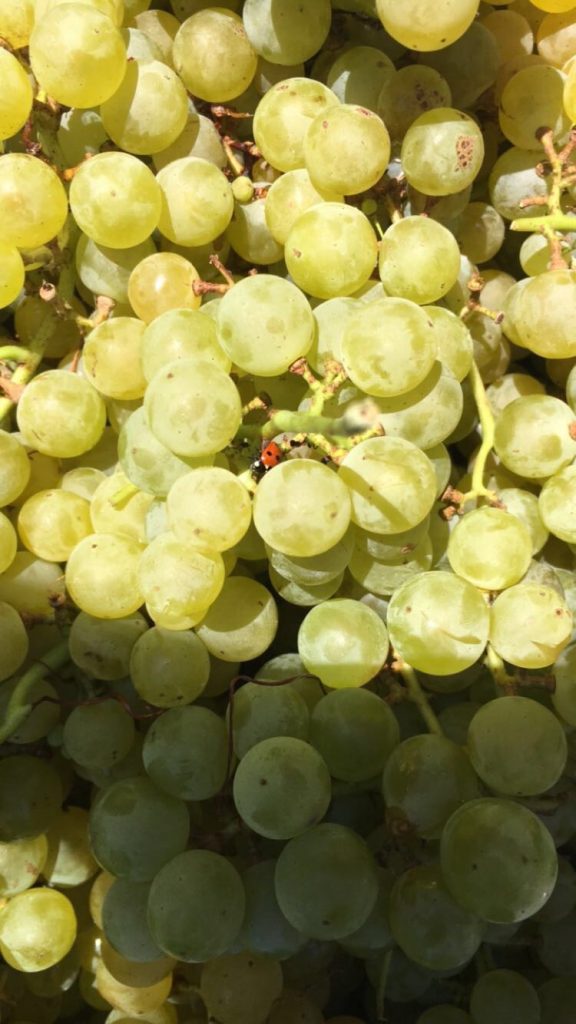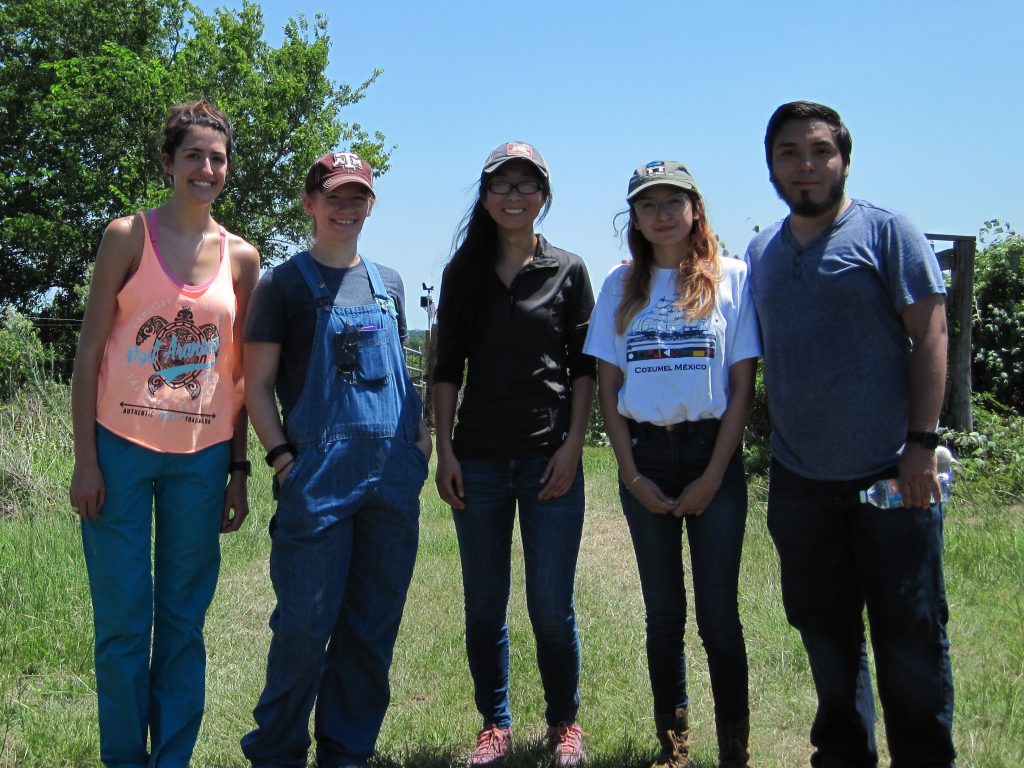By Erika Davila
Last weekend we went on a mission in the name of science– we took on a great opportunity last minute thanks to Dr. Justin Scheiner in Texas A&M’s Department of Horticulture, and found ourselves harvesting grapes at Mound Prairie Vineyard in Snook, Texas! The owner graciously allowed us to take grapes from two rows that were left over after their harvest which he did not need. Conveniently, we were looking to create our own wine for the project, so obviously it was destined for us!
We came across a few friendly, and not so friendly, little critters that call this vineyard home. Unfortunately, a hornet stung the fingers of two of our group members, but hopefully the risk was well worth the reward!
Over the course of several hours we collected about 100 pounds of grapes, which equates to a little over 6 gallons of wine! YAY! To make it as similar as possible to 17th-century wine, we used two common methods of preparation. The first 5 gallons were made using a press, which uses a machine to crush the grapes (in our case a modern bladder press from the Horticulture department), and put in a 5-gallon oak barrel. Another gallon of wine was made by stomping on the grapes, which proved to be a fun workout experience! Both of these methods crush the grapes and release the juice that contains the sugars necessary for the microbes on the grapes to begin fermentation. Now we play the waiting game!
Thanks again to the grape group of people that helped out!
Check out our winemaking process in this fun video below!
Fun fact of the day: The Multicolored Asian Lady Beetle (Harmonia axyridis), a common grape pest, can sometimes be crushed with the grapes during the wine-making process, and taint the flavor of the wine due to the alkaloids found in their defensive secretions. Read more about them here:
https://www.vegedge.umn.edu/pest-profiles/beneficials/mc-asian-lady-beetle
https://ipm.missouri.edu/ipcm/2011/8/Multi-Colored-Asian-Lady-Beetle-Taint-in-Wine/




